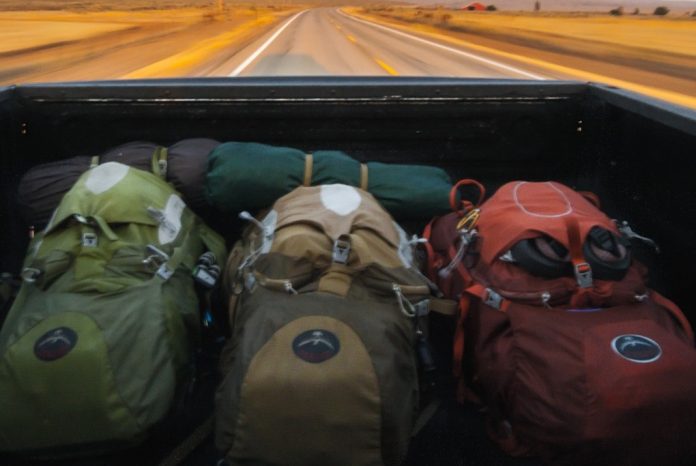Putting together a bug out bag can be a fun and enjoyable experience. Though it forces you to think about harsh eventualities, the central concept behind survival or disaster preparation is having a solid plan in place for any eventuality. Toward that end, we’re presenting a list of bug out must haves which you should consider including in your portable emergency supplies.
1. Hydration
Water and hydration are arguably the most critical essential for any bug out bag setup. The human body can go without water for only 72 hours, meaning it is the first and foremost concern in a survival situation. You’ll want to pack at least three liters of drinking water, some kind of filtration device, water purification tablets, and a variety of containers to use to replenish and stockpile water while you’re on the move. A Lifestraw or other active filtration device is highly recommended, as they’re lightweight, highly compact, and filter out 99.9% of any harmful bacteria and microbes.
2. Food and Food Preparation Gear
The purpose of a bug out bag is to get you to safety or to a place where you can begin to set up something of a more permanent camp, which will allow you to forage for food and collect water. So, the goal here is to get you fed and enable you to adequately prepare food that you manage to acquire while on the move. You’ll want to stock protein or energy bars—about half a dozen should do—along with three or four MREs or dehydrated meals. You’ll want to be sure to have an eating utensil—a metal spork is ideal—a metal cooking pot, a metal cup, a P-38 can opener, a portable stove, and enough fuel to last however long you think you’ll need it to before you can begin to collect fuel once you’ve reached relative safety.
3. Clothing
The clothes you decide to pack into your bug out bag will depend on your location, climate, time of year, and other factors like whether it’s the rainy season, and so forth. It’s a good idea to reevaluate your bug out bag every six months or so to be sure you have seasonally appropriate selection of clothing. Ideally, you want two changes of clothes to ensure you can always swap out of wet clothes. Good general recommendations include a lightweight long-sleeved shirt, convertible pants that can be zipped off to form shorts, a few pair of underwear, three pair of wool hiking socks, a medium weight fleece which will wick moisture to the surface, a hat with a flexible brim to keep sun and rain out of your eyes, a rugged pair of work gloves, and a rain poncho.
4. Shelter and Bedding
If you find that you have room for these items, and can find lightweight and compact examples of them, consider including them in your bug out bag. You can certainly make impromptu or improvised shelters out of a variety of materials, but anything that can contribute to leaving you well-rested and ready to face the challenges of the day ahead can give you a critical edge in a survival environment. Consider having a tarp, a small, lightweight tent, a sleeping bag, a ground pad, and a wool blanket.
5. Fire Starters
You’ll want a little redundancy here so you’re not stuck with one fire starter which may have gotten wet or is otherwise ineffective. Consider having three different types of ignition sources (waterproof matches, a fully fueled waterproof lighter, and a good old flint and steel), as well as ample tinder—cotton balls saturated with petroleum jelly are a great choice—and of course all of the above should be packed in a waterproof container.
6. First Aid
This is a complex issue with many different variations and all kinds of room for debate and discussion, but a good solid basic kit should include a pre-made first aid kit, insect repellant, and a mylar survival blanket.
7. Tools
You’ll want to keep it as simple as possible, both in terms of weight and bulk. A survival knife, a multi-tool, and a machete or other large chopping implement should be all you need for most situations.
8. Light Sources
You’ll want redundancy here as well. Consider packing an LED Headlamp, glowsticks, a mini-LED light, candles, and of course don’t forget batteries.
9. Communications
This is a highly debated subject in the survivalist communities, as some people feel they’re unnecessary or will be obsolete in a true SHTF situation. Let your judgement by your guide, but we’d recommend a cell phone, a crank-powered charger, and an emergency radio with a hand crank.
10. Orienteering
It’s always a good idea to have tools that will enable you to get from A to B with the least possible effort. To that end, we recommend maps of any areas you’re likely to be traveling in, a compass, a notepad with a pencil or waterproof pen, and an emergency whistle loud enough to be heard at least a mile away.
The suggested items for the bug out bag listed above aren’t intended to be exhaustive. You may see room for other items, and you may feel safe in omitting some of the above. The goal of a bug out bag is to get you safely from one place to another, and of course your best judgement should always be a factor in your planning.
Your Fellow Patriot
Steven Bryant








